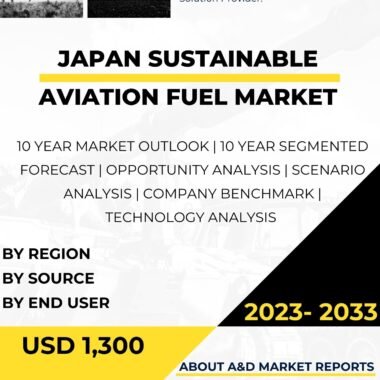Description
Sustainable aviation fuel, also known as biojet fuel or renewable jet fuel, is an alternative to conventional fossil-based jet fuel, derived from sustainable feedstocks such as waste oils, agricultural residues, and non-food biomass. SAF offers a viable pathway to reducing greenhouse gas emissions and mitigating the aviation industry’s environmental impact. In the Netherlands, sustainable aviation fuel is gaining traction as part of the country’s commitment to combat climate change and foster a greener aviation sector.
One of the primary applications of sustainable aviation fuel in the Netherlands is to reduce the carbon footprint of the aviation industry. As a nation with a significant reliance on air travel and home to major airports such as Amsterdam Schiphol Airport, the Netherlands recognizes the urgency of addressing aviation’s environmental impact. SAF serves as a drop-in replacement for conventional jet fuel, requiring no modifications to aircraft or existing infrastructure. By integrating SAF into their operations, airlines and airports in the Netherlands can significantly reduce their carbon emissions and contribute to global climate goals.
Moreover, the Netherlands Sustainable Aviation Fuel Market addresses the requirements of achieving sustainable aviation goals set by international organizations such as the International Civil Aviation Organization (ICAO) and the European Union Aviation Safety Agency (EASA). These entities have established ambitious targets to reduce aviation emissions and promote the adoption of sustainable aviation fuels. The Netherlands’ efforts in developing and utilizing SAF align with these global objectives and demonstrate the country’s commitment to a more sustainable aviation sector.
Additionally, the Netherlands Sustainable Aviation Fuel Market focuses on promoting research, innovation, and investment in SAF production technologies. The Dutch government and private industry collaborate to support the development of advanced biofuels and sustainable feedstocks that can be used to produce SAF. This includes exploring processes such as hydrothermal liquefaction, algae-based biofuels, and synthetic fuels from renewable electricity. These collaborations drive improvements in SAF production efficiency, scalability, and cost-effectiveness, positioning the Netherlands at the forefront of sustainable aviation fuel technology.
The export potential of the Netherlands Sustainable Aviation Fuel Market is also significant. As the demand for sustainable aviation fuel increases globally, the Netherlands’ expertise in SAF production and utilization can open up export opportunities. The country’s reputation for sustainability initiatives and green technologies further enhances its position as a potential exporter of SAF to other nations seeking to decarbonize their aviation sectors.
Challenges in the Netherlands Sustainable Aviation Fuel Market include the need to scale up SAF production and address the cost competitiveness of sustainable aviation fuel compared to conventional jet fuel. Although SAF offers environmental benefits, the current production volumes and feedstock availability may result in higher prices compared to conventional jet fuel. Addressing this cost gap and increasing SAF production capacity is essential for achieving widespread adoption and market competitiveness.
Furthermore, the Netherlands Sustainable Aviation Fuel Market must consider the challenge of sustainable feedstock sourcing and land use. Ensuring that SAF feedstocks are sourced responsibly, without contributing to deforestation or competing with food production, is crucial for maintaining the overall sustainability of the SAF supply chain.
In conclusion, while there might not be publicly available specific data on a separate “Netherlands Sustainable Aviation Fuel Market,” the broader context of sustainable aviation fuel in the Netherlands is of paramount importance for enhancing the aviation sector’s environmental sustainability. Sustainable aviation fuel offers a promising solution to reduce aviation emissions and combat climate change, aligning with global goals to decarbonize the aviation industry. The Netherlands’ focus on SAF technology, research, and investment demonstrates its dedication to providing a more sustainable aviation sector. Collaborations with the government, private industry, and international organizations, export opportunities, and a dedication to innovation have positioned the Netherlands as a key player in the global sustainable aviation fuel market. As the Dutch aviation sector continues to invest in research and development, advancements in SAF production technologies and feedstock sourcing will be essential to achieving widespread adoption and advancing the Netherlands’ leadership in sustainable aviation.




